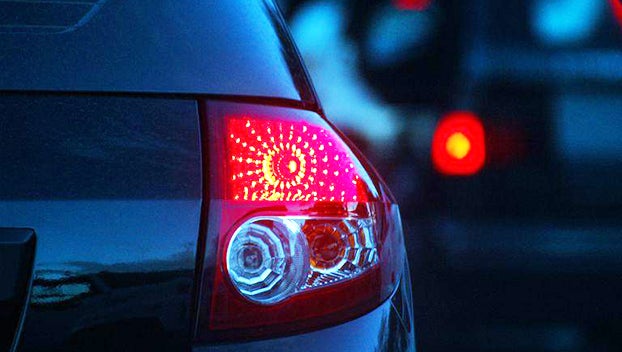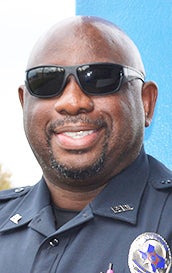ASK A COP — How far can someone drive with a blinker on and not change lanes?
Published 12:04 am Tuesday, May 2, 2023
|
Getting your Trinity Audio player ready...
|
Suzan from Beaumont asks: I need clarification on the use of blinkers. The other day I found myself on Twin City Highway behind a lady in a big truck that was driving in the inside lane with her turn signal on to change lanes. Well, her signal stayed on and on and on and on from 39th Street to Gulfway, and I’m sure beyond that I can’t confirm, because I turned off at Gulfway. She never changed lanes, and I was furious behind her waiting like a dummy for this woman to change lanes. I looked and looked for a policeman, but none was found in that area. Exactly how far can someone drive in a truck with their blinker on and not change lanes?
Answer: Hopefully you’ve calmed down by now. I’m also glad to hear this didn’t turn into a road rage incident. If I was right behind her, there wasn’t much I could do because it is NOT illegal to drive with the turn indicator on continuously and not turn or change lanes. The Texas Transportation Code says a motorist must signal at least 100 feet before turning. The code doesn’t address the maximum a signal can be on. If you are going to change lanes, you must first signal and wait until it’s safe for such movement. There are approximately 2 million crashes accounted for annually in this country because someone failed to properly use or failed to use their turn signals, and over half of motorists surveyed admitted not using their turn signal. It’s not like your turn indicator runs out of fluid.
Priscilla from Port Arthur asks: The other day while driving down Highway 73 I came upon a funeral procession that was on the feeder road about to enter the highway. I was driving in the left hand lane. A police car was stopped in the right hand lane with the lights on just past the on-ramp, where the procession would enter. There was traffic in the right lane beside me or else I would have pulled over to the right shoulder. The procession was just about to enter the highway from the feeder road. What should you do in a scenario like this? I did not feel it was safe to pull over to the left shoulder and certainly would not stop on the highway, so I kept going. I didn’t want to show disrespect, but was not clear on what to do.
Answer: Seems like you were almost caught in a sticky situation. Most of us who have driven an motor vehicle for a long period of time have experienced a funeral procession, whether it was going the same or opposite direction in which we were traveling. Many years ago when I was too young to drive, if you encountered a funeral procession on the road, the motorist and all passengers would exit their vehicle with their hand across their heart in honor of the deceased person and respect for the family. Men would remove their hats for the same reasons, but all vehicles on the road would pull over. That was yesterday, and today things are a whole lot different when motorists approach a funeral procession (if they even stop at all). Let’s deal with your situation. What commands motorists to stop for a funeral procession?
Normally there’s a police vehicle leading the procession, and the Texas transportation code states if there’s an emergency vehicle behind you with its light or siren activated, you are commanded to pull over to the far right side of the road and stop. Now if there’s one police vehicle, there’s normally at least two or three other police vehicles in the procession. So by law if the funeral procession that’s led by police officer is traveling the same direction you are traveling, you should pull over to the right and stop until the last police vehicle passes you. Since the police vehicle was stopped in the exit ramp with its light activated and you were traveling in the far left lane, you were correct in continuing with caution. Now the vehicles that were in the right lane if they passed by the stopped police vehicle with light activated, they are commanded to reduce their speed 20 mph under the posted speed limit. Dealing with funeral procession coming opposite your traveling direction, you are to be cautious but not commanded to take any other action. Now if you want to move over and stop for respect, that’s totally up to you! I’m sure the grieving family seeing an act of human decency will put a smile on their hearts!
Joey from Groves asks: I was taken back by you saying the only thing that’s more dangerous than texting and driving was driving while sleep or DWS. I have always been under the assumption drunk driving was the worst. You opened my eyes, and this is one guy who’s putting his cellphone down and just driving!
Answer: I like calling texting while driving “INTEXTICATED DRIVING” still using the state of Texas acronym DWI. Instead of intoxicated by an alcoholic substance, now we are distracted by cell phones TEXTING. Dealing with cellphones and driving a motor vehicle don’t MIX! Stats say you are 8- to 32-times greater to be involved in a crash while texting than someone who is NOT texting. Pull over, turn the cellphone off, put cellphone in the trunk, remove the battery. Do whatever you need to stay off of the cellphone while driving. The very life you save just may be your OWN.
Join Me, Officer Antoine and the CREW Stephen “Buzzard Boots” Mosley, Lelo “mouth of Hwy 69/73” I Washington & Tejas “Lil Man”Morning Star for Ask A Cop live on KSAP 96.9 FM The Breeze every Tuesday from 1 to 3 p.m. and beyond. Call in questions at 409-982-0247. You can also email questions to rickey.antoine@portarthurtx.gov or leave a voicemail at 409-983-8673. Mail them to Ofc. Rickey Antoine, 645 4th Street, Port Arthur, Texas, 77640. If you happen to see me in public, you can always “Ask A Cop!”







